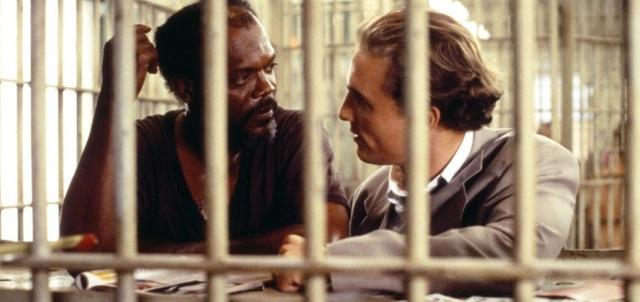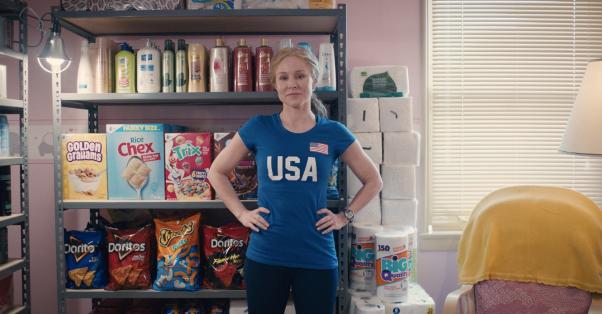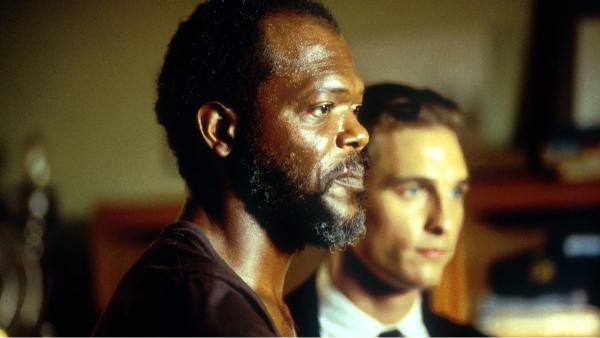The plot of the courtroom drama film “A Time to Kill” centres on the rape of Tonya Hailey, a young African-American girl, by two white males named Billy Ray Cobb and James Willard, as well as their abortive attempt to kill her in Canton, Mississippi. Cobb and Willard are apprehended by the police as soon as they learn about the crime, but Tonya’s father, Carl Lee Hailey, shoots them dead afterwards.
After Hailey is arrested for the retaliation killing, attorney Jake Brigance, who had previously assisted Hailey’s family, takes up Hailey’s defence. Joel Schumacher directed the 1996 movie, which features subtle performances by Sandra Bullock, Kevin Spacey, Samuel L. Jackson, and Matthew McConaughey, elevating the film’s tragic and thought-provoking plot. Is there any truth to the narrative, though? Together, let’s plunge in and discover!
A Time to Kill: Inspiration from a Real 1984 Rape Case
The narrative in “A Time to Kill” is untrue. The film’s screenplay was written by Akiva Goldsman, who took inspiration from John Grisham’s 1989 debut novel of the same name. But the incidents described in the book—and later in the film—were based on a real case that Grisham was aware of. Grisham witnessed the trial of Willie James Harris in 1984, the year the novel is also set, where he was charged with rape and attempted murder of two sisters, one of whom was 16 years old and the other 12 years old.
With just solicitors and reporters present during the younger sister’s horrific account of her ordeal, Grisham’s frustration with the accused only grew. He said in an interview with The Clarion-Ledger that he found himself staring at Harris during a lull in the trial procedures, wondering what the State would do with a man who was charged with killing the man who had raped his daughter. That was “A Time to Kill’s” initial inkling. Grisham required three years to finish the book.
In an interview with KCTV 5, director Joel Schumacher explained that he came to know John Grisham while filming “The Client” and that’s why he decided to adapt “A Time to Kill,” saying it’s the author’s best work. When asked what drew him to the subject enough to turn it into a movie. To delve even further, the latter also highlights the pervasive prejudice that has afflicted the nation for more than 200 years.
The video employs striking imagery to convey the aforementioned message, including the KKK’s march and other associated actions aimed at stopping the trial. The scene where Samuel L. Jackson’s character Carle Lee informs McConaughey’s character Brigance that he hired him because he is white and that, even if unintentionally, his upbringing will make him always despise black people is a far more emotionally charged moment that deals with the racial divide. Samuel L. Jackson stated in an interview with KCTV 5, “I’m a product of segregation and I don’t have any illusions about what America has been, what it is, and what it can be.”
The actor continued, “And so, as I travel, I see things that change and I see things that remain the same, uh, and I am not shocked or surprised by the people’s reactions or their attitudes towards me sometimes until people recognise or realise who I am.” It was unclear whether the actor’s personal experiences with racism had translated into his portrayal of Carl Lee in “A Time to Kill.”
While “A Time to Kill” is not a completely real narrative, its themes of racism, sexual assault, and institutionalised biases make it a story whose elements many have encountered firsthand. The film is worth seeing for nothing else at all, if only for the unadulterated performances of Matthew McConaughey as the man’s tenaciously pursued lawyer and Samuel L. Jackson as a bereaved and justifiably furious father.



